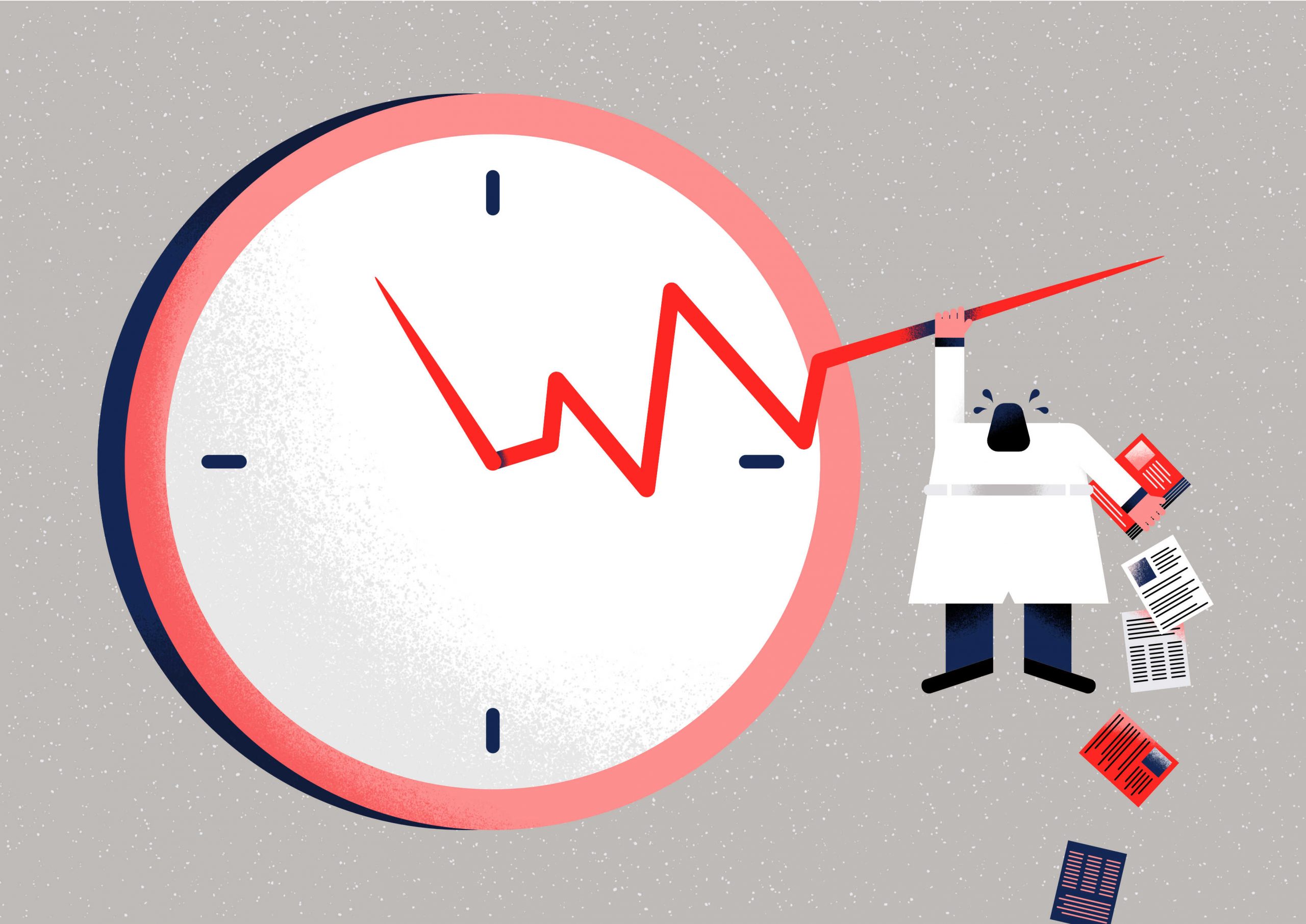How to analyze more ECG signals and have more free time.
The incidence of cardiovascular disease is growing rapidly. According to WHO, cardiovascular disease is the leading cause of death worldwide. What’s more, an increasing shortage of resources – physicians, as well as nurses – is escalating the vast backlog of cardiac care. As we all know, early diagnosis of such diseases is crucial in order to prevent patients from suffering heart failure or sudden death. This is why time is so important.
Patients and doctors are running out of time
After inaccuracy, the second major challenge we identified in cardiology is the time taken for Holter ECG analysis. The most traditional and the most common method for detecting heart rhythm abnormalities is manual Holter ECG analysis. This means that a doctor personally prepares a report based on the signals recorded during the Holter examination. It takes an average of about 30-60 minutes to prepare such a report, so it is fairly time-consuming. Only after preparing the report can the doctor move on to interpretation and diagnosis. Hence, manual ECG analysis is outdated and needs to be supported by solutions tailored to the challenges of today’s cardiology.
With the use of Cardiomatics, a doctor can connect a diagnostic device to any computer and send the signals from the Holter ECG to the cloud. There, the signals are analyzed by artificial intelligence algorithms, reducing the analysis time by up to 80% compared to the standard procedure. It takes only 4 clicks to receive a reliable and informative report which can easily be interpreted by the doctor. The support of AI algorithms reduces cardiologists’ workload and enables them to focus on diagnosis, treatment plans, and overall patient care, rather than manual work. Cardiomatics is faster than traditional analysis and more economically efficient. In addition, it can quickly detect up to 20 heart rhythm abnormalities and identify signatures which take time to be properly recognized by human interpreters.
Artificial intelligence is twice as fast as manual analysis
One thing that has proven the efficiency of artificial intelligence is the implementation of Cardiomatics at the Swiss Hospital in Interlaken. The hospital needed a new solution to deal with the consequences of an increasing demand for healthcare services, workforce shortages, and the rising costs of care. Cardiomatics’ goal was to support them in providing high-quality services in the most time-efficient way. Incorporating new medical software enabled physicians to analyze time-consuming 7-day Holter ECG signals automatically and save up to 80% of cardiologists’ time. Therefore, doctors gained more time for their patients and increased the diagnostic yield.
“It used to be very time-consuming to analyze long-term recordings with our conventional Holter software. With Cardiomatics, interpretation is now fast and reliable,” said Ulrich Ingold, MD from the Swiss Hospital in Interlaken.
Another example of the speed of ECG analysis provided by Cardiomatics is the Swiss Atrial Fibrillation Cohort Study conducted together with University Hospital Basel in Switzerland. The aim of this research was to learn more about the association between AF burden and changes in AF burden and its health consequences, which are mainly stroke, systemic embolism, and cognitive dysfunction. Cardiomatics was responsible for optimizing the research process and ensuring that the 7-day Holter ECG analysis was of the highest quality. The automatic ECG analysis was not only precise and reliable, but also much faster than the standard procedure.
“After uploading the raw signal of the ECG, we get access to a detailed report within a few hours. In a clinical routine, this can save a lot of time compared to the time-consuming analysis of Holter recordings with conventional Holter software,” said Prof. Michael Kühne MD, Head of Clinic Atrial Fibrillation at University Hospital Basel in Switzerland.
Last but not least, the data collected during a pilot programme conducted with the American Heart of Poland clinic in Augustów revealed that before using Cardiomatics, the medical staff had to spend 2 hours a day on average analyzing ECG signals. With the use of AI algorithms, Holter ECG analysis was twice as fast. It enabled doctors to reduce their workload and have more time for patients.
Prevention is the key
Cardiomatics facilitates rapid analysis and more efficient, quicker diagnosis. When it comes to cardiovascular disease, time is crucial. Thus, it is incredibly important to involve modern technologies to make ECG analysis faster and reduce the risk of heart failure or premature death.

